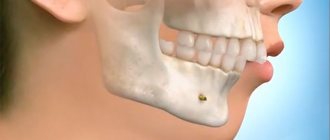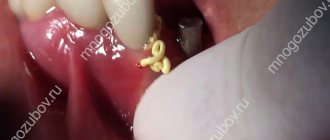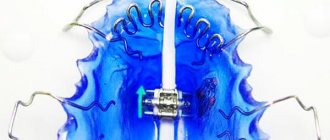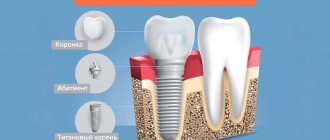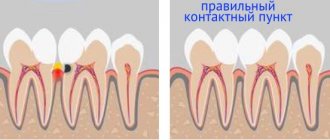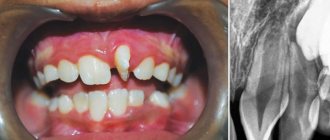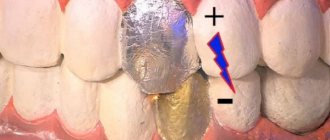Today, the obvious fact is that the level of quality of dental treatment has increased significantly. What affects the quality and long-term treatment is sometimes hidden from the patient’s eyes or he does not attach importance to it. For example, in this article we want to talk about the use of such an auxiliary element in treatment as a rubber dam. It also has other names used: optidam or rubberdam. Sometimes it may seem to the patient that the dental clinic uses such “add-ons” in order to make the treatment procedure more expensive. Believe me, this is absolutely not true. Below we will tell you why the use of a rubber dam in treatment is indispensable if you want to receive high-quality treatment with long-term results.
General overview
A rubber dam is a material with which the dentist isolates a diseased tooth during treatment.
Most often this term refers to a piece of latex with a hole. In fact, this is a broader concept, since in addition to standard 15x15 cm flaps, there are also rolled forms of rubber dam, three-dimensional latex plates, as well as its liquid version.
The invention is not new at all. Dental treatment using this technology was first performed in the mid-19th century. Who owned the original idea is a moot point, since both the Frenchman La Roche and the American Sanford Christie Burnim claimed authorship.
One way or another, but since 1867, rubber dam (from the German Kofferdam) or rubber dam (English version Rubberdam) have entered the practice of dentists everywhere.
The traditional material for rubber dam is cis-1,4-polyisoprene, obtained from the sap of a tropical plant - Hevea brasiliensis.
Nowadays, International Rules for performing a number of dental procedures require the mandatory use of a rubber dam.
What is hidden behind complex names and when to use these tools
Today it is difficult to argue with the fact that in dentistry the level of development of advanced technologies has made it possible to significantly improve the quality of services and bring them to a fundamentally new level. But not all patients clearly understand that dental treatment or restoration largely consists of many little details that are invisible to the average person, each of which is individually important and irreplaceable.
For example, a rubber dam in dentistry. Having heard about it, many believe that this is just another way to extract money from a patient, and do not even suspect that the product can bring significant benefits and contribute to achieving the most positive result. How? Read about this in the material prepared below.
Purpose
Despite the long history of rubber dam, its use in ordinary Russian dental offices is extremely rare.
And where this technology is used, most patients react skeptically to the proposal to install a latex curtain in the oral cavity. However, after treatment with a rubber dam, it is difficult not to appreciate all its benefits.
The use of a rubber dam serves the following purposes:
- maintaining sterility and dryness of the working surface , i.e. saliva and blood should not get on the teeth and root canals;
- preventing the patient from swallowing medications , dental instruments, filling material, and possible pathogenic bacteria that multiply in the thickness of the pulp;
- protection of the field of dental manipulations from contact with the tongue and the inner surface of the cheeks;
- improving visibility of the tooth being treated;
- simplifying access to problem areas;
- preventing possible fogging of the dental mirror.
It is important to understand! The rubber dam is used to improve the comfort of treatment and the highest quality of work. It does not limit the process of swallowing saliva and nasal breathing, so it does not cause discomfort!
In the video, a specialist will talk in more detail about the purpose of the rubber dam.
Why rubber dam has positive aspects for the doctor and for the patient.
- Doctor. The specialist can focus on the treatment process, having the most convenient access to the tooth. The working field is visible much better due to achieving optimal cleanliness and dryness through insulation. The treatment process is monitored more efficiently and time is used rationally.
- Patient . Additional protection from accidental injury to the mucous membranes, gums, and lips. Saliva can be safely swallowed; medications used in treatment and elements from dental treatment do not get into it. The muscles and jaw joints experience less stress and are less tired because treatment time is reduced. All this creates greater comfort.
An undeniable advantage is that the installed filling or restoration will last much longer than during treatment without the use of a rubber dam. The main goal is to improve the quality of treatment. The cost to the patient during treatment of using a rubber dam is negligible, and in the long term, it definitely leads to cost savings.
Tatyana Borisovna Sitenkova
Dentist, therapist
33
years of experience
All types of therapeutic treatment, artistic restoration, hygiene procedures of any degree of complexity.
Make an appointment
Advantages
Cofferdam has a lot of advantages. Its use is preferable for both medical personnel and patients.
Benefits for the doctor:
- The field of work is as open as possible, providing a high-quality view of all surfaces of problem areas, which facilitates manipulation;
- there is no need to control salivation, timely replacement of cotton wool rolls and use of a saliva ejector;
- there is additional protection for medical personnel from possible patient infections;
- harm from natural processes (coughing, sneezing, direct breathing) is minimized, which contributes to maximum adhesion of materials to the tooth surface;
- the patient does not have the opportunity to engage in inappropriate conversations.
Benefits for patients:
- the mucous membranes of the oral cavity are protected from the influence of sharp instruments and caustic liquids for disinfection and rinsing - there is no physical damage, the risk of allergic reactions is reduced;
- the possibility of foreign objects (tooth fragments, crown particles, miniature dental instruments, filling material) and infections getting into the pharynx and respiratory tract is prevented;
- the tongue is protected, but at the same time is in a natural position, which does not load the masticatory muscles, does not make it difficult to swallow saliva and makes it easy to endure long-term treatment with an open mouth;
- a possible gag reflex is suppressed, since the rubber dam protects the palate.
The most important advantage of using a rubber dam is a significant increase in the quality of work performed.
Fillings last longer, and the likelihood of re-inflammation of the root canals due to infection during treatment is minimal.
Let's figure out together why teeth hurt and what can be done in such a situation.
Get acquainted here with the features of the classification of caries according to ICD 10.
At this address https://www.vash-dentist.ru/lechenie/zubyi/effektiven-li-analgin-ot-boli.html we will tell you how to take Analgin for toothache.
Cofferdam: long-forgotten old or new in dentistry
A rubber dam or dental rubber dam allows dental treatment to be performed quickly, reliably, and conveniently. But not everyone knows that this device is not a trend of progress at all, but a long-forgotten old one. Thus, the product was first presented to the public more than 100 years ago. It was invented by an American dentist: in those days the system was successful, but was gradually forgotten by doctors. This happened because it did not directly affect the outcome of treatment, plus it increased material costs. Therefore, only a small part of doctors were ultimately inclined to use it, and then it was used only for endodontic treatment.
Today, increased demands are placed on sterility and quality of work performed. Plus, innovations have appeared - restorations using modern materials, whose quality and perfection are steadily growing - which was not the case before. All this requires a high degree of preparation, which is why the rubber dam in dentistry has again gained popularity.
Flaws
Even the most useful technologies always have controversial issues and limitations in application. The rubber dam has few disadvantages, but it is still necessary to take them into account.
The disadvantages include:
- the likelihood that the patient is allergic to latex or talc with which the finished plates are coated;
- possible trauma to the interdental papillae;
- difficulties with maintaining axial landmarks when preparing a dental cavity at the entrance;
- the need for additional conditions for radiography.
The way out of the first drawback was the use of a rubber dam made of silicone and napkins without sprinkling with talcum powder.
Disadvantages and contraindications
The application of a rubber dam in dentistry is contraindicated for people with nasal breathing problems, because If isolation is applied to the mouth, such a patient will have difficulty breathing. They are not suitable for people prone to epileptic seizures, with Alzheimer's disease, or with allergic reactions to latex, rubber, or talcum powder.
As for the disadvantages of use, they also exist: an unprofessional doctor can spend quite a lot of time installing the device, and it can touch and injure the interdental papillae. This procedure cannot be done without an assistant or assistant. It is best to install a latex napkin in four hands. Also, the doctor may have difficulty selecting the shade of the tooth to be restored with direct restorations, because the rest of the dentition in this case is hidden under the cloth.
Well, and most importantly, this, although slightly, increases the total cost of treatment. But as studies show, 99 patients out of 100 patients would agree to the use of such measures even taking into account the increase in price - but doctors do not always offer it, and patients do not know about this.
Contraindications
- The patient has braces or bridges that prevent the installation of a rubber dam.
- The patient has a history of epilepsy and Alzheimer's disease, as well as neurological disorders and mental instability.
- Diseases of the respiratory system that interfere with nasal breathing (rhinitis of any nature, sinusitis), as well as asthma.
- Acute inflammatory process in the gums and subgingival caries.
- In rare cases, a latex curtain cannot be used due to the anatomical features of the jaw structure.
Areas of application
According to modern requirements for dental procedures, rubber dam is recommended for the following manipulations:
- endodontic treatment (any invasion of the root canals must prevent saliva and/or blood from entering them, otherwise there is a high risk of infection and poor-quality sanitation.
On the other hand, the delicate mucous membrane in the patient’s mouth may suffer from strong antiseptics used during treatment. Both problems are perfectly neutralized use of rubber dam); - adhesive dentistry (in this case, increased demands are placed on the adhesion of filling materials to the tooth);
- filling or restoration of teeth with light-curing materials (the rubber dam allows you to work with the dry surface of the tooth and protects the gums from irradiation by the lamp);
- whitening of tooth enamel (the rubber dam in this case plays the role of protecting the patient’s lips and oral cavity from the high temperature of exposure to bleaching lamps).
Latex wipes make the dentist's work easier and can be used in most situations.
However, installing a rubber dam most often involves four-handed work, so the doctor needs an assistant. In its absence, the technique is rarely used.
Also, there is no need to use a rubber dam for small volumes of work and in most cases in pediatric dentistry.
Types of rubber dam.
Classic rubber dam.
This is a latex napkin, which in turn varies in density and thickness. Depending on the purpose, a certain type is used. There are also differences in colors that determine the scope of application. The colors are: light beige, blue, pink, green, gray, blue.
Liquid rubber dam.
Made on a gel basis, when used it tends to be distributed evenly and is fixed when exposed to special light. This type of rubber dam is used for teeth whitening, sometimes in combination with endodontics (canal treatment).
Free consultation
Startsmile experts - leading dentists in Moscow
The doctors at our aesthetic dentistry center SDent are among the leading specialists in the field of dentistry throughout Moscow.
More details
SDent in the TOP 10 best dental clinics in Moscow
A place of honor in the 2019 rating of private dental clinics in Moscow by the expert magazine about dentistry Startsmile with the support of Kommersant Publishing House
More details
AT THE GERMAN AESTHETIC DENTISTRY CENTER ES-DENT, specialists provide a guarantee for dental treatment and are responsible for the long-term quality result, ensuring the most comfortable condition of the patient during the treatment procedures. That is why the use of a rubber dam has positive aspects for both the patient and the doctor.
Features and varieties
The rubber dam itself is a rubber scarf that is fixed in the oral cavity with special devices.
The standard kit for installing a latex curtain includes:
- a mark (stamp) intended for applying markings to latex;
- a punch , which is used to make holes in a napkin for the tooth;
- staples/clamps that tighten the latex around the tooth;
- clamps and clamps that allow you to install and remove clamps;
- special lubricants and dental floss for pulling the curtain through the interdental spaces;
- frames onto which the latex flap is stretched.
The shape of the rubber dam is:
- in the form of a flap (typical dimensions: 13x13 cm - for endodontic treatment and pediatric dentistry, 15x15 cm - for manipulation of teeth in adults);
- in the form of rolls , also 13 or 15 cm wide, about 0.5 m long;
- plates originally stretched over the frames;
- in liquid form.
The most modern option is a three-dimensional rubber dam complete with an anatomical frame. In this case, the greatest comfort is ensured for the doctor and the patient, and the installation process is greatly simplified.
Classification by latex thickness:
- 0.34...0.39 mm - special thick, used when extreme protection of the oral cavity is necessary;
- 0.29...0.34 mm - extra thick, characterized by increased strength, but difficult to install;
- 0.23...0.29 mm - thick, also durable, but more convenient for application;
- 0.18…0.23 mm – medium – universal option, easy to use, used in most cases;
- 0.13...0.18 mm - thin, easy to stretch, but prone to ruptures and does not adhere well to the tooth. The type is preferable for initial training in working with a rubber dam.
To manipulate chewing molars and premolars, dentists often use a thinner rubber dam; the front teeth are treated mainly using thick napkins.
Classification by color:
- light beige rubber is the most transparent, used when working with root canals;
- intense blue and green colors are used when working with light-curing materials;
- brown and dark gray veils have a good contrast with tooth enamel, but do not reflect too much on it.
If the doctor plans to apply a rubber dam of bright colors, the color of the filling according to the Vita gradation should be selected in advance. During the treatment process, the shade of the enamel will already be significantly distorted.
Icon technology for treating caries and indications for using the technique.
This publication is all about the prevention of non-carious lesions of hard dental tissues.
Follow the link https://www.vash-dentist.ru/lechenie/zubyi/plombyi/iz-chego-skladyivayutsya-tsenyi.html to find out how much a tooth filling costs.
Manufacturers
Dentists most often purchase rubber dam from the following manufacturers:
- Tokuyama Dental, Japan.
- VOCO GmbH, Germany.
- JenDental, America.
- Coltene/Whaledent, Switzerland.
- BISCO, America.
Types and properties of rubber dams
- a classic of the genre: the classic dental rubber dam is made of rubber, which comes in different thicknesses and densities. The most popular option is the average value up to 0.23 millimeters; they are universal for any medical manipulation. Thick and extra-thick are mainly used for gum retraction - their density ranges from 0.29 to 0.38 millimeters. Also, sometimes individual optids are made on special orders when certain conditions must be met,
- liquid rubber dam: it is based on a helium component, which, when applied, spreads evenly and polymerizes under the influence of light, hardens in the interdental spaces and on the gums. It is lightweight and easy to use. The main scope of application is whitening, removal of dental plaque and calculus during professional hygiene, an additional measure of protection in combination with a rubber dam during endodontic treatment of canals.
The color of the device also matters:
- light shades: for example, light beige is suitable for treating and filling tooth canals. The material in this shade turns out to be almost transparent, which makes it possible to perform high-quality tooth restoration and determine its exact position, direction, and shape. Blue, pink, marble colors of rubber dam can also be used for these purposes - but they are used less often,
- dark shades: green, gray, blue are used in restorations and allow you to determine the color, shape, and condition of adjacent elements of the dentition to select the desired shade.
Terms of use
Installing a rubber dam is an easy task. After developing a certain skill, the dentist, especially with the help of an assistant, can cope with the application of the veil in a matter of minutes.
The rubber dam is fixed using two types of clamps – with and without wings. This affects the sequence in which staples are installed. Options with wings are first placed on the latex, and then attached to the tooth; without wings - vice versa.
The latex napkin itself should be positioned on the face as follows: the smooth side of the surface inside the oral cavity, sprinkled with talcum powder, faces the doctor.
4 methods of applying rubber dam have been developed. An experienced doctor, knows everything and applies the appropriate one for each specific case.
Installation methods:
- The “wings” method is used to work with molars and premolars. To do this, the main plastic material is attached to the frame, and a clamp with wings is installed in the hole for the tooth, fixed with forceps.
An intermediate napkin is applied to the face. Then the installation of the curtain itself begins. The prepared clamp is placed on the tooth, secured under the equator. Finally, the latex is removed from the wings using a special smoothing iron. - The “rubber dam first” option is performed with the participation of an assistant. To do this, an assistant with both hands carefully guides the latex stretched onto the frame onto the problematic tooth, threads it through and holds it in this position.
The doctor uses a specialized thread to pull the material into the interdental spaces and then installs clamps. - The “clamp first” option involves initially installing a bracket without wings on the tooth, and only then stretching the latex over it and onto the frame.
- The “arch” method is designed for manipulating lower molars. In this case, valves without wings are preferable.
Step one: the clamp arc is inserted into the rubber dam and secured with forceps, while the flap itself is folded into a bundle. Step two: the clamp is placed on the tooth. Step three: the flap is straightened and pulled onto the frame.
Removal method:
The process of removing an elastic flap is not particularly difficult, especially when working with one tooth.
You just need to remove the clamp and the latex will come off easily. If there were several working units, the napkin is trimmed with scissors. This takes a little over 1 minute, but it is important to make sure that there are no small pieces of rubber left.
What tools does a doctor need to fix the rubber dam?
The installation of a rubber dam in dentistry should be carried out by a specialist using special auxiliary tools: a stencil or template (marker) to accurately determine the location of the tooth and select the place where the hole needs to be made. The doctor will also need a punch - this is a tool that will help make a cut on the latex sheet. The doctor must also have special fastening elements, fixing the rubber sheet: frame, staples and clamps (they differ depending on which tooth should be treated - there are types for upper and lower molars, premolars, central teeth and roots) clamps, floss and dental floss.
Liquid material
Rubber dam in the form of methacrylate gel is a good solution for many dental procedures.
First of all, it is easy to apply, effectively isolates the gums, penetrating into the most difficult interdental areas.
The method of applying it is as follows: retractors are placed in the oral cavity to move the cheeks and tongue, a saliva ejector is inserted and the working surface is dried using cotton rolls.
Then the periodontal tissues are covered with a gel, which polymerizes in 20 seconds. The patient is ready for further manipulations. The protective material is removed with careful movements using a special trowel.
Since the liquid version does not protect the entire oral cavity, its main areas of application are:
- professional enamel whitening;
- microabrasion.
Liquid rubber dam is used when additional protection is needed for gums covered with a classic latex curtain.
What is a rubber dam?
So, rubber dam in dentistry - what is it? Take a look at the photo. This is a latex plastic material. The doctor first places it on the patient’s oral cavity before starting treatment, after which he makes the necessary hole to isolate the working area under one, sometimes several teeth. That is, in essence, it allows you to isolate the working field, remove all unnecessary things that may interfere.
The specialist fixes the device using a special frame or clamps, ensures the required level of lip tension and gets to work.
On a note! Have you heard about optidam in dentistry, but have no idea what rubberdam and rubber dam are? It will be useful for you to know that these are the same thing, the only differences are in the names and their translation from English. But the essence of these devices is the same - to ensure sterility and isolation of the working field.
Doctors' opinion
In addition to the standard list of pros and cons of using a rubber dam, there are also features identified by dentists in practice:
- the application procedure requires more time than laying cotton rolls;
- many older dentists do not see the difference between standard and modern insulation and prefer not to waste time;
- if the patient does not suffer from excessive salivation, then there is no technical need to apply a latex curtain;
- cannot be used for patients with complete edentia;
- if the teeth are severely damaged, it will not be possible to achieve their complete isolation and problems with overlay arise;
- the technology is not justified in the treatment of chips, class 5 gingival defects and other minor cases;
- when using glass ionomer cements, you can get by with traditional cotton rolls; special insulation will not affect the result of the work;
- Most retired dentists simply do not know how to install a rubber dam and do not want to learn, given the above-mentioned disadvantages of the technology.
Modern doctors who have been practicing this method of isolating the surgical field for many years claim that the problem with the process of applying a latex curtain lies only in the doctor’s lack of experience and desire to master the technology.
At first, it takes about 5-10 minutes to fix the isolation; after several months of regular training, this time is reduced to 1 minute. But the advantage is obvious - you can work calmly without being distracted by protecting the work area from the patient’s saliva.
Isolating the working area from the oral cavity allows you to wash the canals with more aggressive antiseptics, because there is no danger of irritation of the mucous membrane or ingestion of the chemical by the patient. With this approach, the work is done more efficiently, because bacteria and infections in the treatment surface are killed 100%. This means that re-treatment will not be required.
Many doctors believe that when using cotton rolls, we are not even talking about isolation, because... cotton wool simply absorbs saliva and blood, while being a collection point for bacteria.
What useful qualities does the product have?
The use of such a protective pad can significantly simplify the specialist’s work and make the treatment as high-quality as possible. The dentist does not need to be distracted by replacing cotton swabs or removing excess fluid - nothing interferes with him in order to fully concentrate on treating the causative tooth. In addition, working with a rubber dam is the key to achieving a high-quality and durable result, because in such isolated conditions neither saliva nor blood disrupt the adhesion strength of the material to the tooth.
As for patients, they also receive tangible benefits if the doctor uses a rubber dam during the treatment process. Here are some of the main benefits:
- quality work done and guaranteed long-term results are an undeniable plus not only for the doctor, but also for the patient. The seal will remain firmly in place for as long as it should
- preventing filling material and medications from getting into the throat and mucous membranes in general,
- reducing the risk of developing allergies, since the drugs and solutions used come into direct contact only with the selected area,
- the ability to swallow saliva normally during treatment,
- reduced discomfort - the mucous membrane dries out less, and the patient does not have to make an effort to keep his mouth open for a long time,
- prevention of the gag reflex, which often occurs in patients when the dentist places cotton rolls.
This material allows you to isolate the treatment area.
The device in question greatly simplifies the doctor’s work, and therefore saves time for him and the patient. Treatment with it goes quickly, and you don’t have to worry about the results obtained.
Interesting Facts
Some interesting facts about rubber dam:
- The result of a survey of dentists about the use of rubber dam in their practice showed that doctors with more than 35 years of experience do not recognize the innovation. And young professionals who have been practicing for 5 years or more cannot imagine working without this improved isolation.
- The most advanced specialists in this topic are graduates of Charles University in Prague. There is an in-depth study of the use of rubber dams.
- Young doctors often use latex insulation when working for hire. As soon as a specialist opens his clinic, he slowly abandons this idea so as not to waste extra time, which eats up profits.
- Indicators of rubber dam use in all European countries are similar to Russia.
- Taiwanese scientists conducted a study in which they analyzed 517,234 teeth after root canal treatment.
Some of them were treated using a rubber dam, and some using the standard method. The condition of the teeth was monitored for three and a half years. Endodontic treatment carried out with complete isolation provided teeth with a survival rate of 90.3%, and cleaning and filling of canals using cotton rolls – 88.8%.
Types of material
The product can be made in different colors, have different thicknesses and parameters. Below are the key differences between the different types of latex insulation:
- form: today specialists more often resort to using plates, although some manufacturers produce an insulating gasket in the form of a roll, in which case the doctor will have to independently adjust the required size. In addition, the pad can have different shapes for ease of use,
- thickness (from 0.13 to 0.39 mm): thin plates are more suitable for working with molars, while when restoring the smile area it is recommended to use the thickest plates. The medium thickness is universal, suitable for almost any area of the jaw system,
- color: almost transparent or light beige insulating napkin helps to better assess the position of the causative tooth. Green and blue colors are suitable for filling with light-curing materials. But in order to determine the tone of the enamel, they resort to using brown or gray latex.
There are also other types of rubber dam for individual cases. So, for example, it is possible to order material without the addition of talc or even without silicone - the best option for allergy sufferers.
Alternatives
The main role of the rubber dam is to ensure the isolation of the tooth from possible moisture. Traditionally, this is solved using cotton rolls that are placed around the tooth. But they have to be changed frequently, they interfere with the dentist’s view and cause discomfort to the patient.
A more modern option is saliva absorbent pads (Dry Tips) . They have greater absorbency and fit more comfortably in the mouth. But their insulating characteristics are still inferior to rubber dam.
For timely removal, a saliva ejector is used . But its use requires the constant presence of an assistant. This device takes up a certain place in the mouth and can interfere with the dentist’s work.
The following isolation methods are less often practiced:
- retraction thread;
- fum tape;
- liquid rubber dam;
- Tofflmayr matrix holder with metal matrices;
- sectional matrices and wooden wedges.
Learn about the advantages of the device and one of the application methods from the video.
Reviews
Over its long history, cofferdam has earned many positive ratings, both among professional doctors and patients.
Do you have experience with latex curtain? What do you think about her? You can leave your comment here.
If you find an error, please select a piece of text and press Ctrl+Enter.
Tags toothache treatment
Did you like the article? stay tuned
Previous article
Is your child afraid of the dentist? Get him out of trouble!!!
Next article
Correction of a gummy smile using gingivectomy
Side Effect Prevention
Specialized rubber-based materials cause latex allergies in some patients. Sometimes a negative reaction of the body is provoked by talc, which is sprinkled on the prepared plates.
Manufacturers took into account the comments of doctors and patients and developed a Kentzer Kascher Dental rubber dam without talc. Repeated spraying with liquid removes fine powder.
Another new product is a silicone-based rubber dam. A material with excellent characteristics, but the elasticity is slightly lower than that of a standard coating. A solution was found - dentists use a larger diameter punch.
Write a comment
Zulfiya
April 16, 2021 at 02:59 pm
We came with the child for a consultation, the doctor persuaded her, looked at her teeth, persuaded her for about 10 minutes, but seemed to have found a contact. I was already happy, I thought we would get my teeth fixed by this aunt. This aunt counted us as much as 18,000 rubles. for 4 teeth! I made an approximate calculation, I read it at home, I found this rubber dam there as many as 4 times for 850 rubles! And why such expenses? I called them and asked why we needed this, since our whole life we had been treating our teeth without it. To which I was told that according to some international standards, children’s teeth are supposed to be treated only with this gasket. It’s terrible, now I’m thinking about looking for a new clinic and trying to persuade the child to try a new one.
Renat
April 16, 2021 at 09:21 pm
It's good that they invented this latex napkin. However, the method only recently reached our city. Convenient, just beyond words. You can swallow normally, nothing runs into your mouth. True, your mouth gets extremely dry and you only need to breathe through your nose, since your mouth turns out to be blocked and you can’t breathe through a napkin.
Anton
April 18, 2021 at 02:44 pm
This may be a cool thing, but not all doctors know how to use it. I went to read how they put it on and realized that not everyone can do it. Despite the fact that all my teeth are in place and not destroyed, my dentist tried to pull this scarf on for about 15 minutes, together with the nurse. They calculated something, adjusted things, and in the end they almost gouged out my eye with some piece of iron that flew out of their hands. In short, no thanks, I’d rather sit with cotton balls behind my cheeks. I want to warn everyone, before agreeing, first ask the doctor how many of these scarves she has already worn during her work
Mark Alexandrovich
July 22, 2021 at 12:39 pm
This may be a cool thing, but not all doctors know how to use it. I went to read how they put it on and realized that not everyone can do it. Despite the fact that all my teeth are in place and not destroyed, my dentist tried to pull this scarf on for about 15 minutes, together with the nurse. They calculated something, adjusted things, and in the end they almost gouged out my eye with some piece of iron that flew out of their hands. In short, no thanks, I’d rather sit with cotton balls behind my cheeks. I want to warn everyone, before agreeing, first ask the doctor how many of these scarves she has already worn during her work
Valentina
July 22, 2021 at 21:00
We came with the child for a consultation, the doctor persuaded her, looked at her teeth, persuaded her for about 10 minutes, but seemed to have found a contact. I was already happy, I thought we would get my teeth fixed by this aunt. This aunt counted us as much as 18,000 rubles. for 4 teeth! I made an approximate calculation, I read it at home, I found this rubber dam there as many as 4 times for 850 rubles! And why such expenses? I called them and asked why we needed this, since our whole life we had been treating our teeth without it. To which I was told that according to some international standards, children’s teeth are supposed to be treated only with this gasket. It’s terrible, now I’m thinking about looking for a new clinic and trying to persuade the child to try a new one.
Stas
July 24, 2021 at 10:18 am
It's good that they invented this latex napkin. However, the method only recently reached our city. Convenient, just beyond words. You can swallow normally, nothing runs into your mouth. True, your mouth gets extremely dry and you only need to breathe through your nose, since your mouth turns out to be blocked and you can’t breathe through a napkin.

